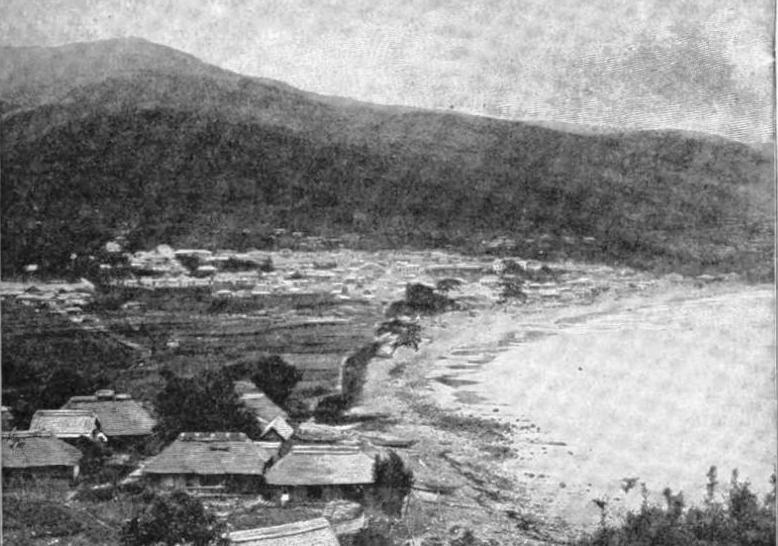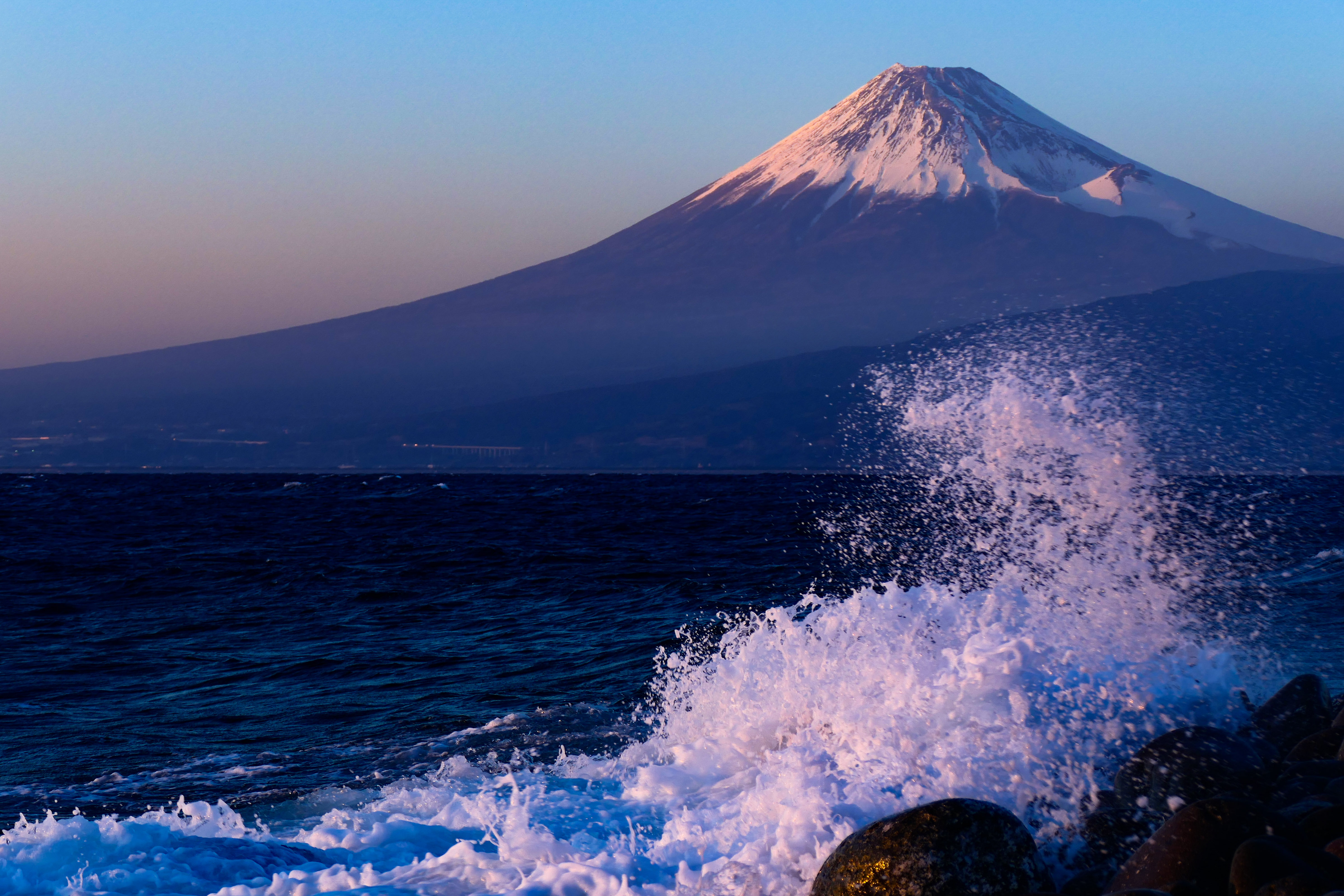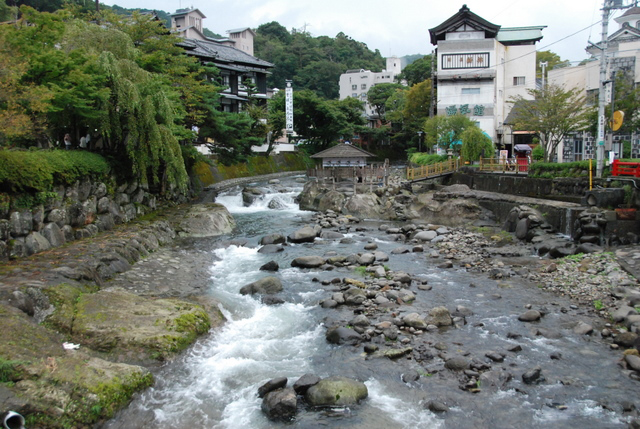|
Izunokuni
270px, Izunokuni City Hall is a city located in Shizuoka Prefecture, Japan. , the city had an estimated population of 48,579 in 21,257 households and a population density of 506 persons per km2. The total area of the city is . Geography Izunokuni is located on the northern "neck" of the Izu Peninsula in eastern Shizuoka Prefecture. The region is hilly, with numerous hot springs. The climate of the region is temperate maritime, with hot, humid summers and short, cool winters, with the warm Kuroshio Current offshore having a moderating effect. Surrounding municipalities *Atami * Izu * Itō *Numazu *Kannami Demographics Per Japanese census data, the population of Izunokuni has been relatively stable over the past 30 years. Climate The city has a climate characterized by characterized by hot and humid summers, and relatively mild winters (Köppen climate classification ''Cfa''). The average annual temperature in Izunokuni is 16.0 °C. The average annual rainfall is 1981& ... [...More Info...] [...Related Items...] OR: [Wikipedia] [Google] [Baidu] |
Atami, Shizuoka
is a city located in Shizuoka Prefecture, Japan. , the city had an estimated population of 36,865 in 21,593 householdsAtami City official statistics and a of 600 persons per km2. The total area of the city is . Geography Atami is located in the far eastern corner of at the northern end of . The city is on the steep slopes of a partial ...[...More Info...] [...Related Items...] OR: [Wikipedia] [Google] [Baidu] |
Shizuoka Prefecture
is a Prefectures of Japan, prefecture of Japan located in the Chūbu region of Honshu. Shizuoka Prefecture has a population of 3,555,818 and has a geographic area of . Shizuoka Prefecture borders Kanagawa Prefecture to the east, Yamanashi Prefecture to the northeast, Nagano Prefecture to the north, and Aichi Prefecture to the west. Shizuoka (city), Shizuoka is the capital and Hamamatsu is the largest city in Shizuoka Prefecture, with other major cities including Fuji, Shizuoka, Fuji, Numazu, and Iwata, Shizuoka, Iwata. Shizuoka Prefecture is located on Japan's Pacific Ocean coast and features Suruga Bay formed by the Izu Peninsula, and Lake Hamana which is considered to be one of Japan's largest lakes. Mount Fuji, the tallest volcano in Japan and cultural icon of the country, is partially located in Shizuoka Prefecture on the border with Yamanashi Prefecture. Shizuoka Prefecture has a significant Motor vehicle, motoring heritage as the founding location of Honda, Suzuki Motor C ... [...More Info...] [...Related Items...] OR: [Wikipedia] [Google] [Baidu] |
Kannami, Shizuoka
is a town located in Tagata District, Shizuoka Prefecture, Japan. , the town had an estimated population of 37,782 in 16,401 households and a population density of 580 persons per km². The total area of the town was . Geography Kannami is located in an inland area in far eastern Shizuoka Prefecture, and the "root" of the Izu Peninsula, and in the southern foothills of the Hakone Mountains and the Tanzawa Mountains. The Kano River passes through the town. Neighboring municipalities *Kanagawa Prefecture **Hakone **Yugawara *Shizuoka Prefecture **Atami **Izunokuni **Mishima **Numazu Demographics Per Japanese census data, the population of Kannami has been increasing over the past 50 years. Climate The city has a climate characterized by hot and humid summers, and relatively mild winters (Köppen climate classification ''Cfa''). The average annual temperature in Kannami is 14.4 °C. The average annual rainfall is 1999 mm with September as the wettest month. The ... [...More Info...] [...Related Items...] OR: [Wikipedia] [Google] [Baidu] |
Izu, Shizuoka
is a Cities of Japan, city located in central Izu Peninsula in Shizuoka Prefecture, Japan. , the city had an estimated population of 30,678 in 13,390 households, and a population density of 84 persons per km2. The total area of the city was . Geography Izu is located in the north-central portion of the Izu Peninsula, and includes most of the Mount Amagi, Amagi Mountains. The region is hilly and some 80% of the city area is covered by forest. The Kano River runs through the city, which has a short coastline to the west on Suruga Bay of the Pacific Ocean. The area is part of the Izu-Tobu volcanic region, and is therefore subject to frequent earthquakes, and the city also has numerous hot springs as a result. Warmed by the Kuroshio Current, the area enjoys a warm maritime climate with hot, humid summers and mild, cool winters. Surrounding municipalities *Shizuoka Prefecture **Higashiizu, Shizuoka, Higashiizu **Itō, Shizuoka, Itō **Izunokuni, Shizuoka, Izunokuni **Kawazu, Shizuo ... [...More Info...] [...Related Items...] OR: [Wikipedia] [Google] [Baidu] |
Itō, Shizuoka
280px, Itō City Hall is a city located on the eastern shore of the Izu Peninsula in Shizuoka Prefecture, Japan. , the city had an estimated population of 63,343 and a population density of 510 persons per square kilometer. The total area was . Geography Itō is located in eastern Shizuoka Prefecture, on the northeast corner of Izu Peninsula, facing Sagami Bay on the Pacific Ocean. The landscape is hilly, and the heavily indented coastline is scenic. Much of the coastal area of the city is within the Fuji-Hakone-Izu National Park, and due to this, the city is noted for its onsen hot springs with many hotels and resorts. It is located within the Izu-Tobu volcanic zone. Due to its proximity to the Tokyo metropolis and ease of transportation, it has been noted as the most visited national park in all Japan. Surrounding municipalities Shizuoka Prefecture * Atami * Higashiizu * Izu * Izunokuni Demographics Per Japanese census data, the population of Itō peaked in around the yea ... [...More Info...] [...Related Items...] OR: [Wikipedia] [Google] [Baidu] |
Numazu, Shizuoka
is a city located in eastern Shizuoka Prefecture, Japan. , the city had an estimated population of 189,486 in 91,986 households, and a population density of 1,014 persons per km2. The total area of the city is . Geography Numazu is at the northwestern end of the Izu Peninsula, which is a leisure destination known for its numerous hot springs. Mount Fuji, Japan's tallest mountain, may also be seen from Numazu on clear days. Numazu is located west of Tokyo and is on the Tōkaidō Main Line, the main railway line from Osaka to Tokyo. Warmed by the Kuroshio Current, the area enjoys a warm maritime climate with hot, humid summers and mild, cool winters. The Kano River runs through the middle of the city. Mount Ashitaka (1188 meters) is the highest point in the city. Neighboring municipalities Shizuoka Prefecture *Mishima * Fuji * Izu * Izunokuni * Shimizu * Nagaizumi *Kannami Demographics Per Japanese census data, the population of Numazu has been in slow decline over the past ... [...More Info...] [...Related Items...] OR: [Wikipedia] [Google] [Baidu] |
Izu Peninsula
The is a mountainous peninsula with a deeply indented coastline to the west of Tokyo on the Pacific Ocean, Pacific coast of the island of Honshu, Japan, the largest of the four main islands of Japan. Formerly known as Izu Province, Izu peninsula is now a part of Shizuoka Prefecture. The peninsula has an area of and its estimated population in 2005 was 473,942 people. The peninsula's populated areas are located primarily on the north and east. Geology Tectonically, the Izu peninsula results from the Philippine Sea Plate colliding with the Okhotsk Plate at the Nankai Trough. The Philippine Sea Plate, the Amurian Plate, and the Okhotsk Plate meet at Mount Fuji, a triple junction. The peninsula itself lies on the Philippine Sea Plate. The southern portion of the peninsula is composed largely of breccia, and the central and northern portions consist of numerous highly eroded volcanoes. The Amagi Mountain Range dominates the center of the peninsula with Mount Amagi () and Mount ... [...More Info...] [...Related Items...] OR: [Wikipedia] [Google] [Baidu] |
Edo Period
The , also known as the , is the period between 1600 or 1603 and 1868 in the history of Japan, when the country was under the rule of the Tokugawa shogunate and some 300 regional ''daimyo'', or feudal lords. Emerging from the chaos of the Sengoku period, the Edo period was characterized by prolonged peace and stability, urbanization and economic growth, strict social order, Isolationism, isolationist foreign policies, and popular enjoyment of Japanese art, arts and Culture of Japan, culture. In 1600, Tokugawa Ieyasu prevailed at the Battle of Sekigahara and established hegemony over most of Japan, and in 1603 was given the title ''shogun'' by Emperor Go-Yōzei. Ieyasu resigned two years later in favor of his son Tokugawa Hidetada, Hidetada, but maintained power, and defeated the primary rival to his authority, Toyotomi Hideyori, at the Siege of Osaka in 1615 before his death the next year. Peace generally prevailed from this point on, making samurai largely redundant. Tokugawa sh ... [...More Info...] [...Related Items...] OR: [Wikipedia] [Google] [Baidu] |
Hōjō Sōun
, also known as , was a Japanese ''daimyo'' and the first head of the Later Hōjō clan, one of the major powers in Japan's Sengoku period. Although he only belonged to a side branch of the more prestigious Ise family, he fought his way up, gaining territory and changing his name in imitation of the illustrious Hōjō. Biography Traditionally Soun held a reputation of a ''rōnin'' who rose to power almost overnight in Kantō; however, he belonged to a prestigious family in the direct employment of the Ashikaga shogunate, and enjoyed important family connections. It has been said that Sōun was born at the Takakoshi castle in Okayama. His sister was married to Imagawa Yoshitada, a major daimyō from a prestigious cadet branch of the Ashikaga family. About 1475, under the cognomen of Ise Shinkuro, he worked for Imagawa, the constable of Suruga Province, and eventually became an "independent leader" with a number of warriors joining him. Shinkuro became a retainer in the Imagawa ... [...More Info...] [...Related Items...] OR: [Wikipedia] [Google] [Baidu] |
Izu Province
was a province of Japan in the area now part of Shizuoka Prefecture and Tokyo. Nussbaum, Louis-Frédéric. (2005). "''Izu''" in . Izu bordered on Sagami and Suruga Provinces. Its abbreviated form name was . The mainland portion of Izu Province, comprising the Izu Peninsula, is today the eastern portion of Shizuoka Prefecture and the Izu Islands are now part of Tokyo. History In 680 A.D., two districts of Suruga Province, Tagata District and Kamo District, were separated into the new Izu Province. At some point between the year 701 and 710, Naka District was added. The capital of the new province was established at Mishima, which also had the ''Kokubun-ji'' and the Ichinomiya ( Mishima Taisha) of the province. Under the '' Engishiki'' classification system, Izu was ranked as a "lesser country" (下国). Under the ''ritsuryō'' legal system, Izu was one of the preferred locations for exile for those convicted of political crimes by the Heian period court. In the Kamakura ... [...More Info...] [...Related Items...] OR: [Wikipedia] [Google] [Baidu] |
Tenryō
The Tokugawa shogunate, also known as the was the military government of Japan during the Edo period from 1603 to 1868. The Tokugawa shogunate was established by Tokugawa Ieyasu after victory at the Battle of Sekigahara, ending the civil wars of the Sengoku period following the collapse of the Ashikaga shogunate. Ieyasu became the ''shōgun,'' and the Tokugawa clan governed Japan from Edo Castle in the eastern city of Edo (Tokyo) along with the ''daimyō'' lords of the ''samurai'' class. The Tokugawa shogunate organized Japanese society under the strict Tokugawa class system and banned most foreigners under the isolationist policies of '' Sakoku'' to promote political stability. The Tokugawa shoguns governed Japan in a feudal system, with each ''daimyō'' administering a '' han'' (feudal domain), although the country was still nominally organized as imperial provinces. Under the Tokugawa shogunate, Japan experienced rapid economic growth and urbanization, which led to ... [...More Info...] [...Related Items...] OR: [Wikipedia] [Google] [Baidu] |
Later Hōjō Clan
The was one of the most powerful samurai families in Japan in the Sengoku period and held domains primarily in the Kantō region. Their last name was simply , but were called "Later Hōjō" to differentiate between the earlier Hōjō clan who had the same name and '' mon'', even though it was not their official family name. History The history of the family is written in the ''Hōjō Godaiki''. The clan is traditionally reckoned to be started by Ise Shinkurō, who came from a branch of the prestigious Ise clan, descendants of Taira no Toshitsugu, a family in the direct service of the Ashikaga shoguns, as close advisors and '' Shugo'' (Governor) of Yamashiro Province (Ise Sadamichi since 1493). During the Imagawa clan succession crisis in 1476, Shinkurō whose sister was married to Imagawa Yoshitada, Shugo (Governor) of Suruga Province, became associated with the Imagawa clan. At the death of Yoshitada in battle, Shinkurō went down to Suruga Province to support his nephew ... [...More Info...] [...Related Items...] OR: [Wikipedia] [Google] [Baidu] |






